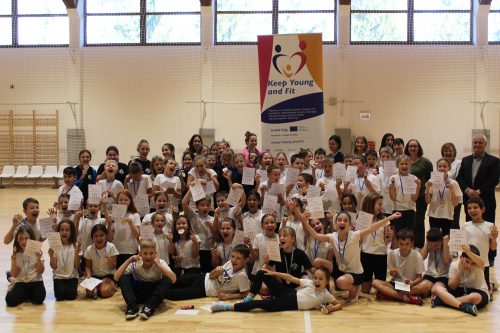Project overview
The rapid development of technology over the last 50 years has fundamentally changed many patterns of behaviour. First television and radio, then computers, video games, tablets and mobile phones, which have become affordable to everyone, have revolutionised the way we spend our leisure time. It is no longer spent actively, in nature or playing or socialising with peers, but in isolation, sitting for hours watching TV, listening to music or playing games. Industrialisation and urbanisation have played their part: the proportion of the population living in rural areas declined rapidly after World War Two, as did the number of children in families.  Growing food used to be a long and arduous process, involving virtually the whole family. But industrial methods of food production and processing, and the development of transport and marketing networks, have made food accessible and cheap. In order to make more money, food and drink manufacturers and sellers began to produce or sell highly sweetened and otherwise high-calorie foods, realising that humans find it hard to resist them, as it is a natural characteristic of our bodies to want to survive, which requires calorie-dense foods. If we add to this the development of the chemical industry, which has been instrumental in the development of preservatives, flavour enhancers and pre-prepared foods, then we have in fact already listed most of the reasons why the situation among young people is as it is today: we have, in most EU countries, a very high proportion of children in their teens who are unable to run 600 m and who are 10 or more kg over the recommended body weight.
Growing food used to be a long and arduous process, involving virtually the whole family. But industrial methods of food production and processing, and the development of transport and marketing networks, have made food accessible and cheap. In order to make more money, food and drink manufacturers and sellers began to produce or sell highly sweetened and otherwise high-calorie foods, realising that humans find it hard to resist them, as it is a natural characteristic of our bodies to want to survive, which requires calorie-dense foods. If we add to this the development of the chemical industry, which has been instrumental in the development of preservatives, flavour enhancers and pre-prepared foods, then we have in fact already listed most of the reasons why the situation among young people is as it is today: we have, in most EU countries, a very high proportion of children in their teens who are unable to run 600 m and who are 10 or more kg over the recommended body weight.
The assessment that the dietary and physical activity habits of young people (and not only young people) are disastrous is, unfortunately, not exaggerated. The national institutions responsible for these issues have come to the same conclusion and have also taken a number of systemic measures to at least curb, if not reverse, these trends. Systems to tackle obesity and poor dietary and physical activity habits among young people and other target groups are already in place, but in many places, they are not delivering the right results or are inadequate and need to be strengthened and supplemented. Slovenia and Hungary are no exceptions, and according to the latest statistics, they are more at the negative end of the EU ranking on these parameters. A joint and coordinated approach to these issues by the Slovenian and Hungarian institutions involved in this project can play an important role, or potentially have a greater impact than without cooperation. The cooperation will be based on an agreement between the partners, which will then serve as a basis for the creation of a group of experts from the partner organisations, whose first task will be to develop a joint strategy with an action plan to tackle the causes of poor physical health among young people in a step-by-step manner. The plan will be tested on a pilot basis in areas where some of the measures to improve the physical well-being of primary school pupils will be implemented: healthier snacks in schools, health days, self-testing, sports activities, etc. The results of the actions will be analysed and, on the basis on that, a special handbook will be produced to summarise the positive aspects of the strategy and action plan in a shorter, more usable format. Its use will be offered to health promotion centres, schools, municipalities and other stakeholders. The expert group will also include representatives of two higher education institutions that will implement the student part of the strategy in their curricula through the introduction of a jointly planned new elective course. Experts from both institutions will be involved in its implementation. The new university course will add value to the project, as will the cooperation of two media companies which, like the faculties, will work together on an inter- institutional basis to produce a series and joint programmes on the subject. The programmes will be broadcast on their channels and will also be offered to other TV stations in the programme area. The importance and role of the media in effectively reaching target audiences is often neglected when addressing this type of issue. Important stakeholders include local, regional and national decision-makers, to whom the handbook will be presented in special presentations. In this context, the offer of mentoring in the implementation of the handbook by experts from the expert group will be highlighted as another option. In addition, two high-profile conferences will be held where experts will present the strategy and open the floor to stakeholders to review or update it.
Thus, the main objective of the project is to complement the existing youth health prevention systems in the programme area in order to make them more effective.
Project achievements and materials
In this section you can find useful materials related to the project.
- File 1
- File 2
Project duration
Project start date:
1.1.2024
Project end date:

